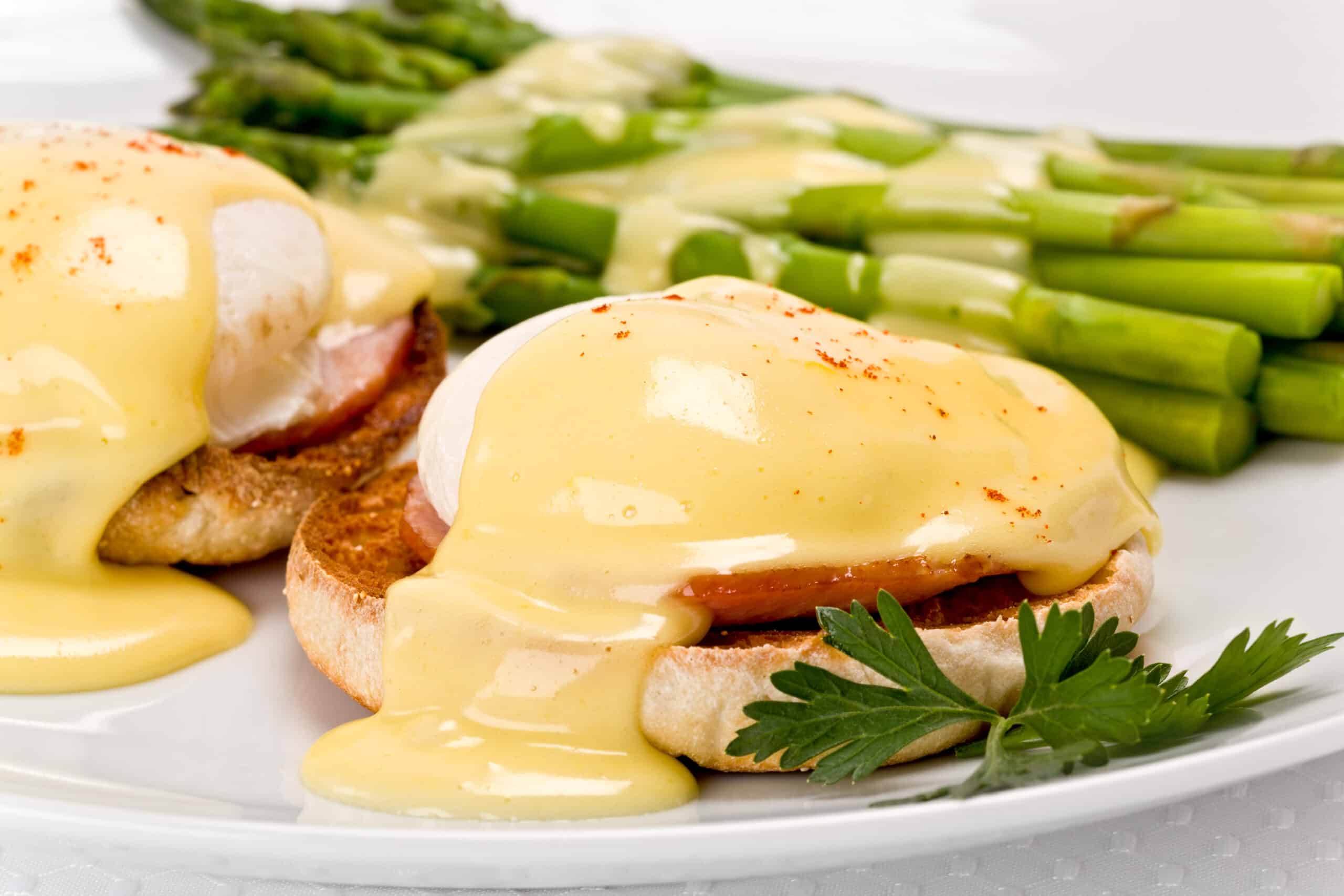
Hollandaise sauce, a classic French sauce known for its rich and velvety texture, is a staple in numerous well-loved dishes. Made with egg yolks, lemon juice, and melted butter, this sauce may seem intimidating to prepare due to its delicate process. However, with the right method and careful attention, even beginner cooks can master the art of making Hollandaise sauce. In the following article, you will find a step-by-step guide to making a perfect Hollandaise sauce at home.
One significant factor in achieving the desired consistency of Hollandaise sauce is temperature control. If the heat becomes too high, the sauce may separate or curdle, while insufficient heat may result in a thin, watery texture. In this guide, we will navigate you through the steps required to maintain the ideal temperature, along with tips and tricks to ensure a rich and silky sauce.
Equipped with this recipe and a few essential tools, you’ll soon discover that making Hollandaise sauce from scratch is a rewarding experience. Transform your brunches with eggs Benedict and elevate your roasted vegetables by drizzling this luxurious sauce over them. Follow our guide and become a master of this classic sauce.
To make a classic Hollandaise sauce, gather the following ingredients which are essential for creating a rich and creamy texture:
There are some optional ingredients that can be included to achieve a taste variation or to add a little extra kick to the sauce:
Keep in mind that the key to a perfect Hollandaise sauce is to create a stable emulsion using the right balance of ingredients. It is crucial to carefully follow the recipe steps, with attention given to proper heating and whisking techniques. This will result in a delicious, smooth, and creamy Hollandaise sauce.
To make a perfect Hollandaise Sauce, you’ll need a few essential tools. First and foremost, a whisk is your best friend when it comes to achieving a smooth consistency. You can use a traditional manual whisk or, if you prefer, an electric mixer with whisk attachments.

Another option for mixing your sauce ingredients is a blender. A regular countertop blender works well, but an immersion blender is more convenient since it allows you to blend the sauce directly in a container. Keep in mind that using a blender can be a bit more challenging when it comes to controlling the texture of the sauce.
For heating your Hollandaise Sauce, a double boiler—a metal or glass bowl set over a pot of gently simmering water—is ideal. The gentle heat from the steam is perfect for thickening the egg yolks without overcooking them. If you don’t have a double boiler, a metal bowl placed over a pot of simmering water works just as well.
A microwave is another handy tool for melting the butter needed for your sauce. Using the microwave simplifies the butter-melting process and helps to maintain even heat distribution. Remember to use a microwave-safe measuring cup or container to avoid accidents.
Finally, a clean kitchen towel is essential for wiping your whisk and bowl clean during the process and handling hot equipment. It also helps to avoid any stray spills or splashes.
By gathering these essential tools, you’ll be well-prepared to easily and confidently create a delicious and smooth Hollandaise Sauce.
Hollandaise sauce is a classic emulsion that requires patience and practice to perfect. This delightful sauce often enhances various dishes, such as eggs Benedict and roasted vegetables. This section provides a clear, concise, step-by-step recipe to create a delicious and smooth Hollandaise sauce.
To begin, gather the following ingredients:
First, separate the egg yolks and place them in a heatproof bowl, such as a stainless steel or glass bowl. Add the lemon juice to the yolks and whisk until the mixture is smooth and slightly thickened.
Next, fill a saucepan with a small amount of water and bring it to a simmer. Ensure that the heatproof bowl with the egg yolk mixture can be placed on top of the saucepan without touching the water. This will create a double boiler that prevents direct heat from cooking the egg yolks.
Place the bowl containing the egg yolk mixture on top of the simmering saucepan and continue to whisk. Gradually add the melted butter in a slow, steady stream while constantly whisking. The key to a successful Hollandaise sauce is to emulsify the ingredients by incorporating the fat from the butter with egg yolks and lemon juice.
As the butter is added, the sauce should start to thicken. Be careful not to overheat the mixture and maintain a consistent whisking motion. Add a teaspoon of warm water to adjust the consistency if the sauce becomes too thick.
Once the butter is fully incorporated, remove the bowl from the heat. Season the Hollandaise sauce with salt and pepper to taste. Serve the sauce immediately, as it may break down if left to sit for an extended period of time.
In conclusion, making Hollandaise sauce may seem daunting at first glance, but with practice and attention to detail, you can master this classic recipe. Following the step-by-step instructions, you can create a deliciously satisfying and versatile Hollandaise sauce to elevate your favorite dishes.
Hollandaise sauce is a classic and versatile topping that can elevate various dishes, making them perfect for brunch, breakfast, or any meal. The rich, creamy, and tangy sauce pairs well with eggs, vegetables, and an array of proteins.
One of the most popular uses for hollandaise sauce is in the classic dish Eggs Benedict. Eggs Benedict consists of toasted English muffins topped with poached eggs, ham, and a generous amount of hollandaise sauce. This dish is a staple at brunch menus and an all-time favorite among breakfast lovers.
Speaking of breakfast, hollandaise makes a delightful addition to poached eggs served over toast or alongside crispy bacon. The sauce also proves to be an excellent accompaniment to various vegetables. For instance, drizzling the sauce over steamed or grilled asparagus renders a delicious side dish. Additionally, hollandaise can complement other vegetables, such as broccoli or artichokes, enhancing their flavors with its buttery richness.

Eggs Benedict with Smoked Salmon and hollandaise sauce are a match made in culinary heaven. Whether it’s smoked salmon served on a bagel or fresh oven-baked salmon, the sauce brings a delightful richness that complements the fish’s natural flavors. As for other seafood options, hollandaise works equally well with lobster, shrimp, or crab, offering a refined touch to the dishes.

Another protein option to consider is ham. The classic pairing of ham and hollandaise brings a touch of elegance to a simple baked ham, turning it into a delicious main course. Moreover, one can also serve sliced ham on toast, topped with a poached egg and hollandaise for a tasty breakfast option.
Finally, if you wish to get creative, incorporating hollandaise sauce into crepes can yield an exquisite meal. Fill crepes with sautéed vegetables or delicate proteins like crab, shrimp, or chicken, and finish them with a drizzle of the sauce. This decadent treat is ideal for special occasions or a weekend indulgence.
In conclusion, hollandaise sauce enhances a vast array of dishes, making them truly delectable. From eggs benedict to seafood and from brunch favorites to special occasion delights, the possibilities are endless when it comes to incorporating this versatile sauce into your culinary repertoire.
Hollandaise sauce is a classic, versatile ingredient that can be tweaked to create various delightful flavors. One well-known variation is Béarnaise sauce, which is often used as a topping for steak or vegetables. It is similar to traditional Hollandaise sauce but includes the addition of tarragon and shallots. To make Béarnaise sauce, infuse vinegar with tarragon and shallots before using it in your regular Hollandaise recipe.
Another interesting variation is by adding tomato to create a more robust, savory flavor. You can achieve this by incorporating tomato puree or a dollop of marinara sauce into your standard Hollandaise. This modification is perfect for pairing with seafood, pasta, or as a topping for eggs Benedict with smoked salmon.
Experimenting with various herbs and spices can also lead to delightful variations of the classic Hollandaise sauce. For example, you might try adding a pinch of smoked paprika for a smoky twist or a hint of freshly grated horseradish for a surprising kick. These unique flavors can elevate a dish and give it a totally new dimension.
In summary, Hollandaise sauce can be easily adapted by incorporating different flavors, such as Béarnaise sauce, tomato-infused Hollandaise, or adding various herbs and spices. These creative variations will impress your guests and add a new dimension to your favorite dishes.
Hollandaise sauce is a rich and flavorful addition to many dishes, but it’s important to be aware of its nutritional content. Made primarily from egg yolks, butter, and lemon juice, this sauce is high in calories and fat, but it can also provide some essential nutrients, such as protein and vitamins A and C.
On average, a 1/4 cup serving of hollandaise sauce contains approximately 180 to 200 calories, most of which come from fat. The sauce is typically high in saturated fat, with around 12 to 15 grams per serving. This is important to consider when enjoying hollandaise sauce, as a high intake of saturated fats could lead to an increased risk of heart disease.
Cholesterol content in hollandaise sauce is also significant, as egg yolks are a major ingredient. A single serving may contain up to 170 mg of cholesterol, which is more than half of the recommended daily intake for most people. While the cholesterol in eggs may not significantly impact blood cholesterol levels for everyone, it is still wise to consume hollandaise sauce in moderation, especially for those with cholesterol concerns.
A 1/4 cup serving of hollandaise sauce provides around 2 grams of protein and small amounts of carbohydrates and sugar (about 1 gram each). Sodium content can vary depending on the recipe, but generally, the sauce provides less than 100 mg per serving.
Hollandaise sauce contains vitamins A and C, which have antioxidant properties and support the immune system. Vitamin A is essential for eye health, while vitamin C plays a role in collagen synthesis and wound healing. However, the amounts of these vitamins in a serving of hollandaise sauce are quite low, so it’s not a significant source.
Although hollandaise sauce does provide some potassium, calcium, and iron, the amounts are minimal and therefore not a significant contribution to the daily recommended intake. The sauce also contains little to no fiber.
In conclusion, while hollandaise sauce can add a touch of indulgence and flavor to various dishes, it’s essential to enjoy it in moderation due to its high calorie, fat, and cholesterol content. Incorporating other sources of vitamins, minerals, and nutrients in your meal can help balance out the nutritional profile while still enjoying the delicious taste of hollandaise sauce.
When making hollandaise sauce, achieving the perfect consistency might seem challenging, but these tips can help you through the process. First and foremost, avoid a runny sauce; the easiest way to do this is by making sure the egg yolks and butter are at the right temperature. The egg yolks should be gently heated to prevent cooking and the butter should be melted and slightly warm – too cold and the sauce will not emulsify, too hot and the sauce may become too thick.
Another important aspect to consider is the method of cooking. Using a double-boiler allows for consistent and gentle heating of the egg yolks while providing a controlled temperature. However, it’s important to continuously whisk the ingredients to ensure even heat distribution and prevent them from getting overcooked.
In some cases, the sauce may become too thick. This issue can be resolved by slowly adding a small amount of warm water while constantly whisking until the desired consistency is reached. When adjusting the consistency, make sure to add the liquid gradually. Adding too much at once can result in a runny sauce.
It’s also essential to properly remove the egg whites from the yolks when separating them. Including egg whites in the sauce can negatively impact the texture and lead to undesired results.
Maintaining the appropriate butterfat content plays a crucial role in achieving the perfect hollandaise sauce. Using high-quality unsalted butter with high butterfat content is recommended. When emulsifying, pour the melted butter slowly, making sure it incorporates properly with the egg yolk mixture.
Lastly, don’t forget about the importance of seasonings. Lemon juice, salt, and pepper are typically added, but feel free to adjust according to personal preference. Some recipes also call for Dijon mustard and cayenne pepper for added flavor. Remember to taste and adjust seasonings as necessary to achieve a balanced and delicious hollandaise sauce.
Hollandaise sauce, a classic French sauce known for its velvety texture, is an essential component of Eggs Benedict and asparagus dishes. Making it ahead of time can make meal prep easier, especially for large gatherings or special occasions. Here’s a guide on how to make this delicious sauce ahead and reheat it without compromising its smooth texture.
To make hollandaise sauce ahead of time, follow a traditional recipe and allow the sauce to cool to room temperature. Then, transfer the sauce to an airtight container and store it in the refrigerator for up to two days. Keep in mind that the sauce might thicken in the fridge, so you may need to whisk in a little warm water or melted butter before reheating to achieve the desired consistency.
Reheating hollandaise sauce can be a bit tricky, as improper handling can cause the sauce to separate or become curdled. One method to reheat the sauce is in the microwave. Set the microwave power to 20%, and heat the sauce in 10-second increments, stirring vigorously after each cycle. Repeat this process until the hollandaise has sufficiently reheated, ensuring even heating and preventing the sauce from overcooking.
Alternatively, you can reheat the sauce on the stovetop using a double boiler. Fill the bottom of a double boiler with water, just enough to touch the bottom of the top bowl. Place the hollandaise sauce in the top section and heat the water to a gentle simmer. Stir the sauce constantly while it heats, ensuring that the temperature remains consistent and does not get too hot, as this could cause it to break.
In summary, making hollandaise sauce ahead of time can make meal prep more manageable, and reheating it properly, either in the microwave or on the stovetop, is essential to maintain its quality. Following these steps, you’ll be able to enjoy perfectly smooth hollandaise sauce whenever you need it.
Hollandaise sauce is known for its rich and creamy texture, which comes from a combination of three main ingredients: egg yolks, butter, and lemon juice. Salt and pepper are also commonly added for seasoning.
The traditional method for making Hollandaise sauce involves whisking egg yolks with lemon juice and water in a heat-resistant bowl, then place the bowl over a double boiler. The mixture is gently heated until it thickens, while continuously whisking. Once thickened, the sauce is finished by gradually incorporating warm, melted butter in a slow and steady stream.
To prevent Hollandaise sauce from splitting, it is crucial to control the temperature and whisk constantly during the process. If the heat is too high, the egg yolks may scramble, and too low temperatures may prevent the sauce from thickening. Emulsifying the sauce requires integrating the butter gradually while whisking vigorously to ensure the sauce remains cohesive.
Some common variations on Hollandaise sauce include Béarnaise, which features tarragon, shallots, and vinegar; Choron, a Béarnaise sauce with tomato; and Maltaise, which combines orange juice and zest instead of lemon juice.
Homemade Hollandaise sauce generally lasts up to one day when stored in the refrigerator. Due to its delicate nature and the presence of raw egg yolks, it is not recommended to keep the sauce for an extended period. Hollandaise sauce is best consumed fresh when the flavor and texture are at their peak.
Hollandaise sauce is a versatile accompaniment that pairs well with numerous dishes such as Eggs Benedict, asparagus, salmon, and other seafood delicacies. Additionally, this classic sauce is delightful when drizzled over steamed or roasted vegetables like broccoli or cauliflower.

